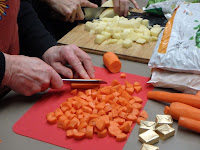The Partners for Healthier Communities:North Cariboo / P4HC:NC is now accepting Request for Proposals from local community groups, schools, and /or organizations so Phase 3 of the Empowering Family Health Project can be planned and implemented for 2018. Deadline for the RPF is December 6, 2017
The intention of the RFP is to encourage organisations / groups / clubs / schools that have an idea or a project that supports the vision of the P4HC:NC to become a partner and submit a proposal to the P2HC:NC so funding can be allocated to their project in 2018.
The project or idea must:
(i) meet the criteria and conditions of P4HC grants as specified by Northern Health and
(ii) meet the vision of the Empowering Family Health Project of “Growing North Cariboo Food & Communities”.
To receive funds under this RPF, all applicants must be based in the “North Cariboo” of the Cariboo Regional District (the geographic area of Electoral Area A, B, C and I, the District of Wells and the City of Quesnel) and area of the Northern Health Authority.
To learn more about this process, please click on the following two documents:
Please contact empoweringfamilyhealth@gmail.com or GNC@farmed.ca for additional information.










